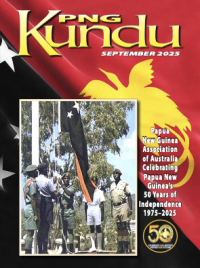Browse our Photo Galleries
Contributions are welcome and may be used in our quarterly journal. Please include date (approximate is fine), names and place. Permission to use photographs should be obtained from the authors or check with PNGAA. Following any approval to re-use photographs, both the photographer and PNGAA need acknowledging.
The following photographs were taken by Jim Van Der Kamp. Jim joined the PNG Public Health Department's Malaria Control Programme as a Field Officer in January 1965 after 18 months service in the Army as a Medico in what was then Dutch New Guinea (now West Papua) and a break back in Holland. Following a few weeks in Popondetta and Wanigela, Jim’s first posting was at Bolubolu Patrol Post on Goodenough Island where he remained for 5 months. He then spent 14 months at Mapamoiwa on Fergusson Island, patrolling all the D'Entrecasteaux islands including Woodlark and the Trobriand islands. In mid 1966 Jim was transferred to Rabaul for further training at the then Malaria Institute. In January 1967 he was posted to Minj in the Western Highlands as District Malaria Supervisor, moving to Mount Hagen in 1969. September 1973 saw a posting to Kieta, Bougainville, as Provincial Malaria Supervisor. After six and a half years of extensive patrolling, Jim, in 1980, was transferred to Goroka in the Eastern Highlands Province and took up the position of Regional Inspector covering most of the Highland Provinces. Jim went “finish” in February 1985. ..... Normanby Island is the most southerly of the main islands that comprise the D'Entrecasteaux Group, being situated 3 km south of Fergusson Island from which it is separated by the Dobu Passage, and 16 km northeast of East Cape — the easternmost point on the PNG mainland — across the Goschen Strait. Normanby Island has an irregular and elongated shape, measuring 73 km in length (northwest to southeast), is 28 km to 4 km in width and covers an area of 1,040 km². The island has a range of terrain types that includes low coastal plains and swamplands, high mountains (reaching 1,158 m) and steep coastal slopes. The eastern end of the island is characterised by north to south trending ridges and valleys that deeply dissect the landscape. In 1873, the island was visited by British Captain John Moresby, commanding HMS Basilisk, who named it after the Marquess of Normanby, George Augustus Constantine Phipps, a governor of Queensland, Australia.
























